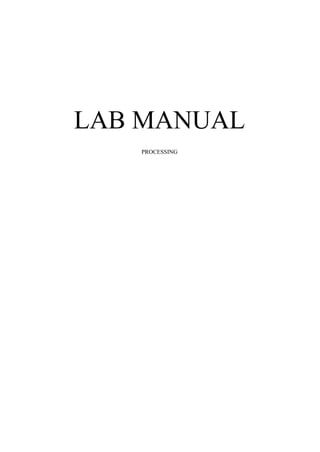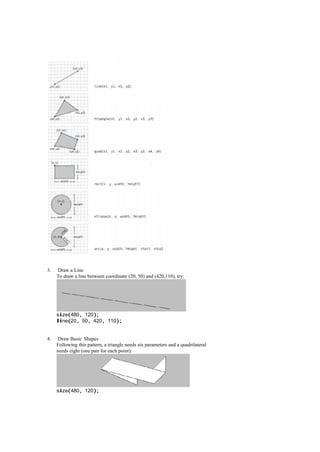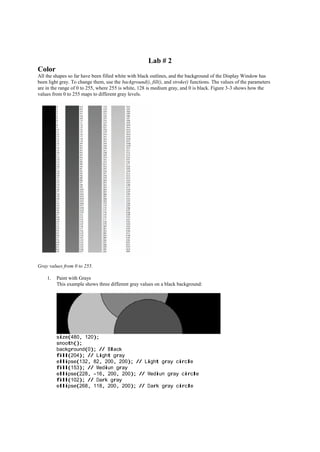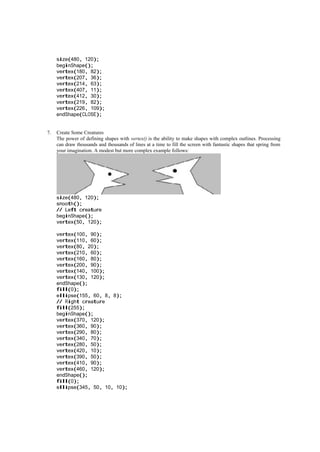This lab manual covers basic drawing in Processing by introducing functions to control size, position, color, and shape properties. It begins by explaining how to set the window size and draw points and basic shapes using functions like size(), point(), line(), rect(), ellipse(), and arc(). Parameters for these functions determine properties like position, width, height, and angles. The order of drawing shapes impacts which appear on top. Additional functions like background(), fill(), stroke(), strokeWeight(), and smooth() control background color, shape colors, line thickness, and smoothing. Values range from 0-255 to specify colors by red, green, and blue components.










